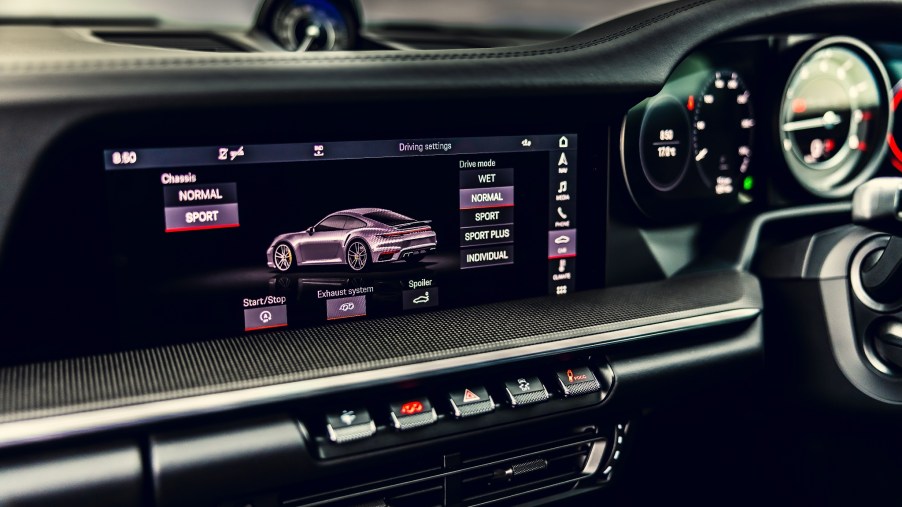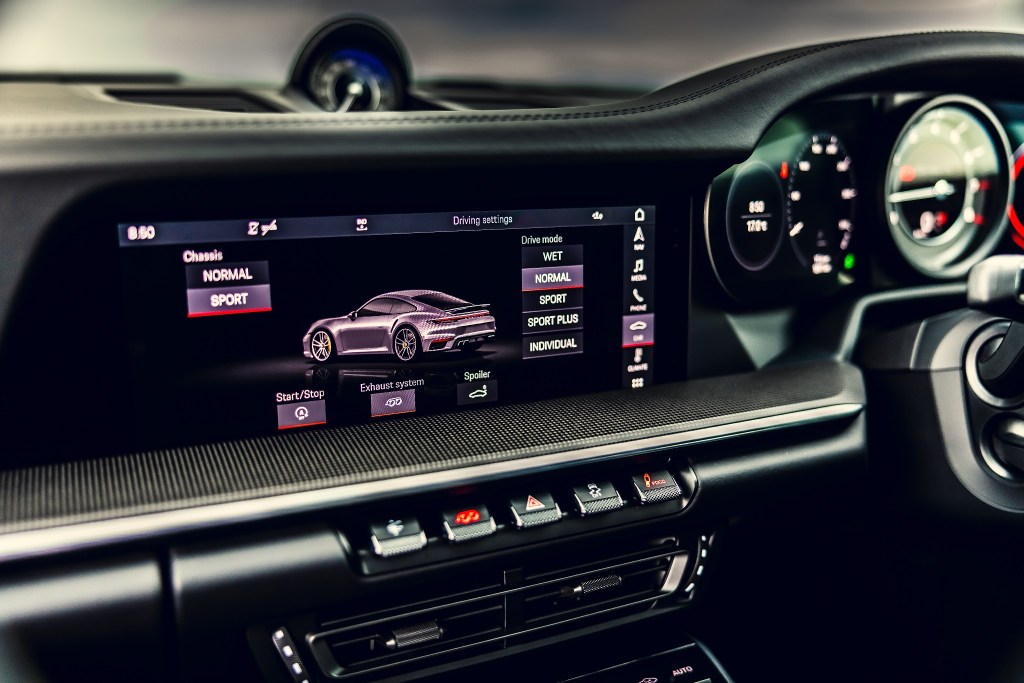
What Does Launch Control Actually Do?
From more power to stickier tires to sportier and stiffer suspension, high-performance cars benefit from a variety of accessories, features, and tools. And nowadays, launch control is a common sight amongst such vehicles. Even a few motorcycles like the Ducati Panigale and Streetfighter offer it. But how does launch control benefit your car? And can you actually make use of those benefits in day-to-day situations?
What is launch control supposed to do?

Launch control, much like the adjustable driving modes that are also starting to propagate, is basically software. And its nominal purpose is to help a car accelerate as quickly and smoothly off the line as possible, CarThrottle explains. That means putting the most amount of power down on the ground as possible while minimizing wasteful wheelspin.
As we previously discussed regarding 0-60 mph times, acceleration isn’t just down to how much power or torque your car has. Your tires have a finite amount of grip, and overwhelming them by simply mashing the throttle means you won’t move. And if you have a manual transmission, you also have to factor in smooth shifts and clutch action, PistonHeads reports. That’s a lot of moving parts for a human driver to keep track of—which is where launch control comes in, Car and Driver explains.
As with driving modes, launch control is connected to several of your car’s subsystems. Which specific ones depend on the individual vehicle and manufacturer, Car and Driver reports. At its most basic, launch control sets the car up to rev to a certain RPM before the computer or you dump the clutch. The specific RPM is meant to let the engine build power, but not so much you smoke the tires, Haltech explains.
But as cars have added more electronics, the software controlling and linking them has grown more sophisticated. Modern launch control systems often coordinate not just the engine’s response but also transmission settings, the traction control, all-wheel-drive settings, and even the suspension.
Does launch control have tangible performance benefits?
When launch control first debuted on production cars, it was arguably more of a party trick than a useful performance tool.
It wasn’t unusual for repeated launches to cause noticeably powertrain damage, Road & Track reports. Nissan had to reprogram the R35 GT-R’s system precisely because it would destroy the supercar’s dual-clutch transmission, Car and Driver reports. Also, on some performance cars, careful human input could beat the computers. Car and Driver demonstrated it on an SRT Viper.
However, over the past few years, launch control has become a necessity for recording the best acceleration figures. It’s what lets the upcoming Hummer EV record a claimed 0-60 mph time of 3.0 seconds, for example. The electronics simply react faster and more consistently than even some of the best humans can, MotorTrend explains.
Admittedly, these benefits are often somewhat small. In Car and Driver’s testing, the launch control typically decreased 0-60 mph times by 0.1-0.2 seconds. And ¼-mile times were similarly reduced. Still, if you want to show off how fast your new performance car is, a quicker 0-60 mph time is an excellent way to do it, The Drive muses. And launch control helps you do that.
But it’s the difference in consistency that’s arguably the most significant benefit. A well-calibrated computer is better at metering power and traction than all but the best human drivers. Which, if you’re competing in a drag race, is absolutely important.
Should/can you use it in the real world?
However, although launch control has its benefits, they’re not necessarily useful on public roads.
For one, some systems can be tricky to activate in a short amount of time. In the outgoing BMW M4, for example, engaging launch control requires warming the engine, deactivating the stability control, and selecting a specific driving and transmission mode. Only then can the driver place their feet on the brake and accelerator to activate the software. Admittedly, some manufacturers simplify it down to pressing a button and holding down the brake and accelerator.
However, even if the software is easy to activate, that doesn’t mean you should. Especially not when you’re in a crowded parking lot or trying to merge onto a highway, The Drive and CarThrottle report. Launch control is designed around maximum acceleration, regardless of oncoming obstacles, road imperfections, or anything else. Even if you think you’re prepared for it, you can easily lose control of the car.
There’s also the problem with setting launch control up in the first place. You have to stand in place with your engine revving. How often do you really do that in front of the stoplight? More to the point, how long can you do that before someone gets annoyed and calls the cops?
Finally, launch control only helps from a standing start. It doesn’t improve your passing power on the highway, nor does it actually increase power to decrease curb weight. It also doesn’t automatically make you a better driver. It’s merely one tool in the performance toolbox.
Follow more updates from MotorBiscuit on our Facebook page.


